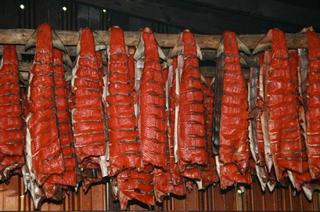Monitoring Delay Could Mean Conservative Management for Local Salmon Run

Monday, June 18 2012
The salmon may be running at Cape Wislow, but no one is keeping track of how many are spawning.
For the past decade, the U.S. Fish and Wildlife Service has operated a weir at the run that connects Reese Bay to McLees Lake, giving the community accurate counts of how many sockeye salmon are making it up the stream. The federal grant for the program ran out last year, so the Alaska Department of Fish and Game agreed to take the weir over for the next three seasons.
But even though there is money set aside for the program, no data is currently being collected. Matt Keyse works for Fish and Game, and he says that there have been problems staffing the Wislow weir but that specifics are confidential.
“We’re re-hiring personnel at this point,” says Keyse. “If that all goes well, we will hopefully have the weir up and operational, I would say, it would definitely be no later than July 1.”
The delay poses a problem for long-term monitoring of the run’s strength, since the sockeye salmon are usually done spawning by mid-July. And in the short term, the absence of a weir means that Fish and Game will have to manage the run more conservatively. Because there is no way of determining if the escapement goal has been met, Fish and Game is expected to prohibit fishing within 500 yards of the stream from July 1 to July 9.
Lack of data also makes it harder for subsistence fishermen to decide whether to make the trek out to Wislow.
“Basically, word of mouth is going to be the best way for people to get an indication of what the run is like,” says Keyse.
By this time last year, 8,000 sockeye salmon had already been counted at Wislow. If word of mouth is to be believed, the run this year may be just as healthy.
“In the 14 years I’ve been fishing out here, this is the most fish I’ve ever caught,” says Unalaska resident Troy Magnusen, “So, at this point I’d say the run’s pretty strong. It’s going to be a good year.”
Magnusen has now gone gillnetting for reds a few times this June. He says that while there aren’t too many fish jumping onto the beach there are a number of schools off of the shore. It looks to him that the run has been coming in big spurts so far.
“About a week ago, we gillnetted about 63 reds out of there in five hours, and then about three days ago we got another 18 or 19 reds in about four hours,” says Magnusen. “I think the run is definitely coming in.”
The Wislow run last year was the strongest since 2003, with over 35,000 salmon passing through the weir. The minimum escapement goal is 10,000 fish.



